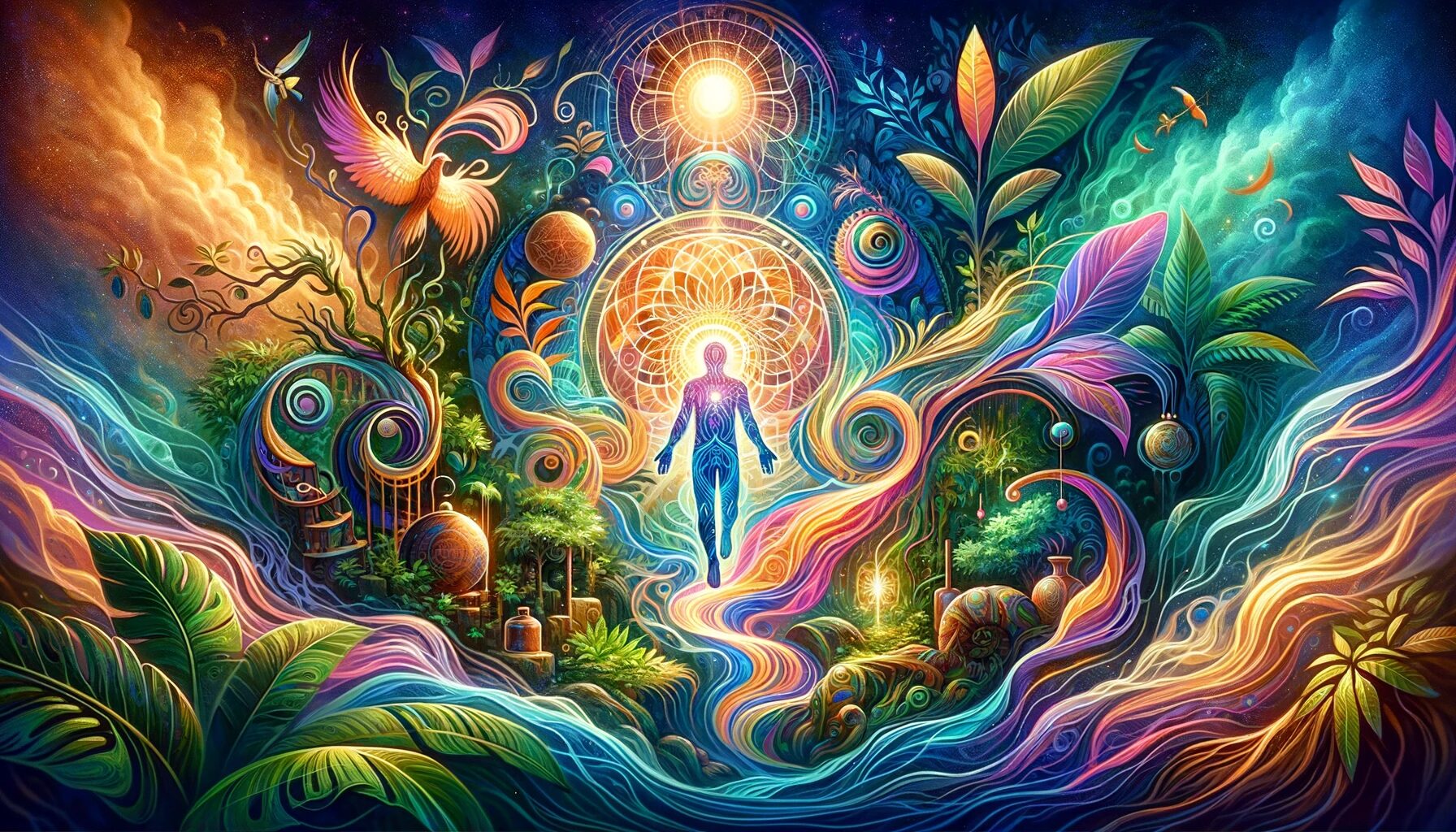Ayahuasca, a powerful plant-based brew originating from the Amazon basin, has piqued global curiosity. Once a sacred ritual confined to indigenous tribes, it now attracts people worldwide seeking spiritual, emotional, and psychological healing. But embarking on an ayahuasca journey isn’t a decision to be taken lightly. It requires thorough preparation, both to maximize the benefits and to navigate the experience safely and responsibly.
This guide is designed to walk you through that preparation process. From understanding the legal implications to ensuring your mental and physical readiness, we’ll cover all you need to know before diving into the mystical world of ayahuasca. Whether you’re a first-timer or a seasoned explorer, these insights will help you approach your journey with respect, awareness, and an open heart.
Understanding Ayahuasca
The Roots and Rituals
Ayahuasca, often described as both a journey and a medicine, has a rich history deeply rooted in indigenous Amazonian culture. Traditionally, it’s been used for spiritual and healing purposes by tribes in countries like Peru, Brazil, and Colombia. The brew, made from the Banisteriopsis caapi vine and the Psychotria viridis leaf, creates a powerful psychedelic experience.
The Science Behind the Brew
What makes ayahuasca unique is its combination of two key components: DMT (Dimethyltryptamine), a naturally occurring psychedelic compound, and monoamine oxidase inhibitors (MAOIs), which make the DMT orally active. When ingested, ayahuasca works on the brain’s serotonin receptors, leading to an altered state of consciousness that can last several hours. This altered state is often characterized by vivid visions, introspection, and profound emotional release.
Despite its potential for deep psychological exploration, it’s essential to approach ayahuasca with respect and understanding. It’s not a recreational drug, but a tool for spiritual and emotional healing, deeply intertwined with the culture and traditions from which it originates.
Legal Considerations
Navigating the Legal Landscape
Before even considering an ayahuasca experience, it’s crucial to understand the legal framework surrounding it. The legal status of ayahuasca varies significantly around the world. In countries like Peru and Brazil, it’s legal and forms a part of traditional ceremonies. However, in many Western countries, the components of ayahuasca are classified as controlled substances, making its use and distribution illegal.
Why Legal Awareness is Important
It’s not just about abiding by the law; understanding the legal context of ayahuasca is a part of respecting its cultural heritage. In countries where ayahuasca is legal, there are often guidelines and regulations in place to ensure that its use is respectful, safe, and aligned with traditional practices. As a potential participant, it’s your responsibility to be informed and respectful of these laws. Engaging in ayahuasca tourism can have both legal repercussions and ethical implications, particularly in terms of how it affects indigenous communities and their sacred traditions.
Physical Preparation
Preparing your body for an ayahuasca ceremony is as crucial as the mental preparation. This section will guide you through dietary recommendations and health considerations to ensure your body is ready for the experience.
Dietary Guidelines
- Dietary Restrictions: In the days leading up to the ceremony, it’s advised to follow a diet low in salt, sugar, and processed foods. Avoid pork, red meat, spicy foods, and caffeine. These restrictions help detoxify the body and can also enhance the ayahuasca experience.
- Hydration and Nutrition: Staying hydrated and eating light, nutritious meals is essential. Foods like fruits, vegetables, and grains are recommended. It’s also important to avoid alcohol and recreational drugs for at least a week before the ceremony.
Health Considerations
- Medical Advice: It’s vital to consult with a healthcare professional before participating in an ayahuasca ceremony, especially if you have pre-existing health conditions or are on medication. Ayahuasca can interact with a wide range of medications, particularly antidepressants, causing serious health risks.
- Physical Fitness: While you don’t need to be an athlete, a basic level of physical fitness can help. The ceremony often involves long periods of sitting or lying down and can be physically demanding in unexpected ways.
- Aftercare: Plan for a recovery period after the ceremony. Give your body time to rest and readjust, and continue to follow a gentle, nutritious diet.
By taking these steps, you’re not only ensuring your safety but also showing respect for the process and the profound impact it can have on your body and mind.
Mental and Emotional Preparation
Embarking on an ayahuasca journey is as much a mental and emotional endeavor as it is physical. Preparing your mind and spirit is key to a meaningful experience.
Setting Intentions
- Understanding Your Why: Reflect on why you’re seeking this experience. Are you looking for healing, spiritual insight, or personal growth? Understanding your intentions can guide your journey and frame your mindset.
- Managing Expectations: It’s important to approach ayahuasca with an open mind. Every experience is unique, and it may not align with your preconceptions. Be prepared for the possibility of challenging or unexpected revelations.
Techniques for Mental Readiness
- Meditation and Mindfulness: Practices like meditation or mindfulness can help calm your mind and center your thoughts. They’re valuable tools for dealing with the intense emotions and revelations that ayahuasca can bring.
- Educating Yourself: Read about others’ experiences and understand the range of possibilities. This knowledge can help reduce anxiety and prepare you for various outcomes.
- Emotional Resilience: Building emotional resilience can be beneficial. Techniques like journaling, talking to a therapist, or engaging in supportive communities can strengthen your emotional preparedness.
Remember, ayahuasca can surface deep-seated emotions and memories. Being mentally and emotionally prepared can help you navigate these revelations more effectively, leading to a more profound and transformative experience.
Cultural Respect and Understanding
Ayahuasca is more than just a brew; it’s a part of a rich cultural tapestry. Understanding and respecting this cultural context is crucial for anyone considering an ayahuasca experience.
The Indigenous Roots of Ayahuasca
- Historical Significance: Ayahuasca has been used for centuries by indigenous tribes in the Amazon for spiritual and healing purposes. It’s deeply intertwined with their traditions, beliefs, and rituals.
- Learning About Traditions: Before participating in an ayahuasca ceremony, take the time to learn about the cultural and spiritual significance of the practice. This understanding can deepen your own experience and foster a greater respect for the traditions and the people who have maintained them.
Respecting Cultural Practices
- Ethical Engagement: If you’re traveling to a country where ayahuasca is traditionally used, be conscious of how you engage with local communities. Choose practices and guides that respect and honor the indigenous traditions.
- Cultural Appropriation vs. Appreciation: Be mindful of the thin line between cultural appropriation and appreciation. Engaging with ayahuasca should be done in a way that honors its origins and supports the indigenous communities, not exploits them.
By approaching your ayahuasca journey with cultural sensitivity and respect, you not only enrich your own experience but also contribute positively to the preservation and appreciation of these ancient practices.
Choosing the Right Setting and Guide
The environment and guidance you choose for your ayahuasca experience can significantly impact its quality and safety. Here’s how to make informed choices.
Selecting the Right Environment
- Safety and Comfort: Look for a setting that prioritizes safety and comfort. This could be a specialized retreat center or a private ceremony with a trusted guide. The right environment should feel secure and supportive.
- Group Size and Dynamics: Consider the size of the group and the dynamics. A smaller group might offer a more intimate and personalized experience, while a larger one might provide a sense of community.
Finding a Knowledgeable and Experienced Guide
- Background and Experience: Research the background and experience of the guide or shaman. They should have a deep understanding of ayahuasca, its effects, and how to handle the variety of experiences people may have.
- Reputation and Testimonials: Look for reviews or testimonials from previous participants. A reputable guide will have a history of positive feedback and a track record of conducting ceremonies safely and respectfully.
- Cultural Sensitivity: Ensure the guide respects the cultural roots of ayahuasca and conducts the ceremony in a way that honors its traditions.
Choosing the right setting and guide is about finding a balance between comfort, safety, cultural authenticity, and personal connection. This decision is crucial in shaping your ayahuasca experience, impacting not just the journey itself, but also the insights and healing you derive from it.
Conclusion
Embarking on an ayahuasca journey is a profound and often life-changing decision. It’s a path that demands respect, preparation, and a deep sense of responsibility towards yourself and the cultural heritage of the practice. From understanding the legal nuances and preparing your body and mind, to selecting the right setting and guide, each step is crucial in shaping your experience.
Remember, ayahuasca isn’t a quick fix or a recreational experience; it’s a spiritual journey that requires an open heart and mind. Approaching it with the right intentions, respect for its cultural roots, and a commitment to your own mental and physical preparation can lead to a transformative experience. For those seeking more information on the legal status of ayahuasca, government resources like the U.S. Drug Enforcement Administration’s website provide valuable insights.
As you consider stepping into this ancient and sacred world, let this guide serve as your roadmap to a safe, respectful, and enlightening journey. May your ayahuasca experience be filled with insight, healing, and a deeper connection to the world around you.
FAQs
Q1: How long should I prepare before an ayahuasca ceremony?
A: Ideally, preparation should start at least a week before the ceremony. This includes following dietary guidelines, abstaining from certain substances, and engaging in mental and emotional preparation.
Q2: Can I take medications before an ayahuasca ceremony?
A: Many medications, especially psychiatric ones like antidepressants, can have dangerous interactions with ayahuasca. It’s crucial to consult with a healthcare professional and inform your ayahuasca guide about any medications you’re taking.
Q3: Is it safe to travel alone to an ayahuasca retreat?
A: Safety depends on the location and the reputation of the retreat. Research thoroughly and consider reaching out to past participants. It’s often advised to travel with a companion, especially if you’re unfamiliar with the region.
Q4: How do I know if a guide or shaman is reputable?
A: Look for guides with positive testimonials and a track record of safe practices. A reputable guide will be open about their experience, training, and approach to conducting ceremonies.
Q5: Can ayahuasca affect my mental health?
A: Ayahuasca can bring up intense emotions and memories. It’s important to be mentally prepared and to have support during and after the ceremony. Those with a history of mental health issues should consult a professional before participating.
Q6: What should I do if I have a challenging experience during the ceremony?
A: It’s important to communicate with your guide or shaman. They can provide support and guidance. Remember, challenging experiences can be part of the healing process, but your safety and comfort should always be a priority.
Q7: How can I ensure I’m respecting the cultural origins of ayahuasca?
A: Educate yourself about the cultural and spiritual significance of ayahuasca. Choose practices and guides that honor these traditions, and avoid those that commercialize or exploit the experience.

Alex is a seasoned writer and researcher, specializing in psychedelic studies and mental health. Known for insightful and authoritative content, he combines extensive knowledge with a passion for exploring wellness and alternative therapies. Alex’s work is a trusted resource for readers delving into the world of mental well-being.


Leave a Reply